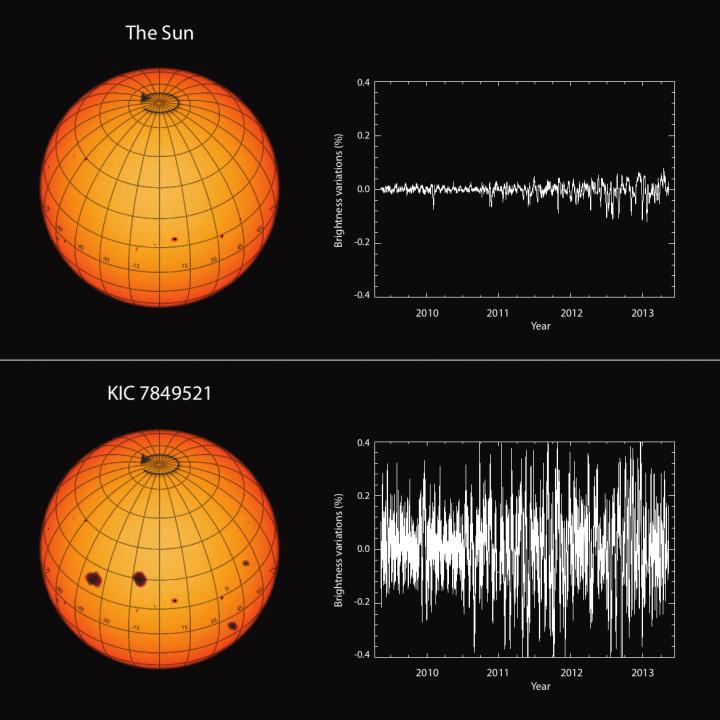Silent Sun: The phenomenon of our quiet star
The Sun is rather quiet. That’s the premise of my novel “Silent Sun.” But now researchers at the Max Planck Institute for Solar System Research (MPS) in Göttingen, Germany have also proved it with a systematic comparison published in Science. In such analyses, of course, it is important to make sure you are not comparing apples with oranges. Red dwarfs, for example, are considered much more active. But even among the class of yellow dwarfs like the Sun, there can be big differences.
Therefore, the researchers selected candidate stars that were similar to the Sun in terms of important characteristics. In addition to surface temperature, age, and proportion of heavy elements, another characteristic was rotational velocity. “The speed at which a star rotates about its own axis is a crucial variable,” says Sami Solanki, director at MPS and co-author of the study.
This rotation contributes primarily to a process in the interior of the star that generates a magnetic field like in a dynamo. “This magnetic field is the driving force behind all fluctuations in activity,” says Solanki. The state of the magnetic field determines how often a star erupts and how many sunspots and bright regions appear on its surface – and thus ultimately also how brightly the star shines.
In practice, there has been a comprehensive catalog of the rotational velocities of thousands of stars only for a few years. It is based on measurements from NASA’s Kepler Space Telescope, which, from 2009 to 2013, recorded the fluctuations in brightness of approx. 150,000 main sequence stars – that is, those, like our Sun, that are in the middle of their life. The researchers searched through this huge amount of data and selected those stars that rotate once about their own axis within 20 to 30 days (Sun: 24.5 days). They reduced this comparison group further with the help of data from the European Gaia Space Telescope. This left 369 stars that are also similar to the Sun in other basic characteristics.
The exact analysis of the fluctuations in brightness of these stars from 2009 to 2013 reveals a clear picture: while the total output of radiation of the Sun fluctuated by just 0.07 percent, its colleagues varied five times more strongly. “We were very surprised that most of the Sun-like stars are much more active than the Sun,” says Alexander Shapiro, head of the research group at MPS.
However, it hasn’t been possible to determine the rotational velocity for all the stars that Kepler observed. “For many stars, such periodic darkening cannot be detected. It’s lost in the noise of the measurement data and in other fluctuations in brightness of the star,” says Timo Reinhold, another researcher at MPS and the lead author of the study. Therefore, the researchers also studied more than 2500 Sun-like stars, whose rotational velocity could not be determined, but whose brightness also fluctuated. And, in fact, these fluctuated much less.
Two interpretations can be made: there could be a still unexplained, fundamental difference between the stars with known rotational velocity and those for which this value could not yet be determined. “It is just as conceivable that stars with known and Sun-like rotational velocities will show us which fluctuations in activity the Sun is fundamentally capable of,” says Shapiro. This would mean that our star has been unusually boring over the last 9000 years, for which we can estimate its activity, and that on very large time scales, phases with much greater fluctuation are also conceivable. Such intensified activity would definitely be a danger to the Earth. Unfortunately, the researchers can’t see into the future. But perhaps they simply don’t know yet why the Sun has been so silent…
